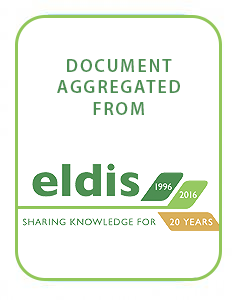Resource information
This report shows how Participatory 3-D Modelling and other advanced geographic and cartographic techniques have helped in consensual solutions for land and resource tenure conflicts, based on an improved understanding and visualisation of territorial landmarks. It presents photos and detailed descriptions of a conflict resolution experience in the Phillipines.In remote, poorly served areas, community-based mapping methods can help in addressing boundary issues through the visualization of the landscape, associated land uses and settlement pattern. Since 1987, scaled relief models have been used in Northern Thailand to deal with conflicts among ethnic minorities and between these and government agencies. In the Philippines, the use of 3-D models started later in 1993. Integrated with Geographic Information Systems (GIS) and Global Positioning Systems (GPS), Participatory 3-D Modelling (P3DM) has been used among Indigenous Peoples under the auspices of the Department of Environment and Natural Resources (DENR) and lately, of the Office of the Presidential Adviser on the Peace Process (OPAPP). This article discusses how the method has contributed to a successfull conflict resolution case in the Cordillera Administrative Region of the Philippines.In a context where cultural and biological diversities have been under great pressure from logging, mining, conversion of forests into farmland, population increase, and movement of lowland communities into areas traditionally occupied by Indigenous Peoples (IPs), maps exerted all their power in addressing resource tenure and access conflicts, and in influencing national governance. Cartography resulting from two and three dimensional community- based maps, supported by GPS/GIS applications, formed the foundations upon which IPs filed numerous applications to the GENR's Certificate of Ancestral Domain Claim (CADC), and developed ancestral domain resource management plans.Through the use of the relief model, it became apparent that diverse ethno-linguistic groups were using different names for natural landmarks, like creeks and peaks. Different denominations and interpretations of landmarks and features were ineluctably sources of disagreement. When a process is geared towards addressing conflicts bound to the territory, communication systems are essential ingredients to provide all parties with equal access to information in order to develop a common understanding of the issues at stake. When language barriers like the ones existing among the Elders of different ethno-linguistic groups in the Cordillera do represent an additional constraint, information exchange best occurs via visual communication based on colour, shape and texture, like in a 3-D model. In such context, there is no doubt that the third dimension and the holistic view offered by the relief model have been key factors in facilitating the consolidation of the negotiation process: there were only one highest mountain and one creek so-and-so to be named, seen, felt and touched by all concerned.This preliminary assessment of the Balbalan case indicates that the use of a 1:5,000-scale relief model, encompassing the entire municipality and portions of the neighbouring municipalities, has been instrumental in facilitating a series of consensual conflict resolution processes. Almost all have led to potentially stable solutions, anchored on objectively verifiable, geo-referenced sources, including a 3-D model, derived map and the technical descriptions that will be produced by the forthcoming ground survey. In the light of growing development pressures, agreements making use of sketch maps and non-technical descriptions appear to be shortlived because these are prone to subjective interpretations. In addition, the model has contributed to improving communication by creating a shared vantage point and a common visual vocabulary, thus bridging communication barriers due to different perspectives and spoken languages.


